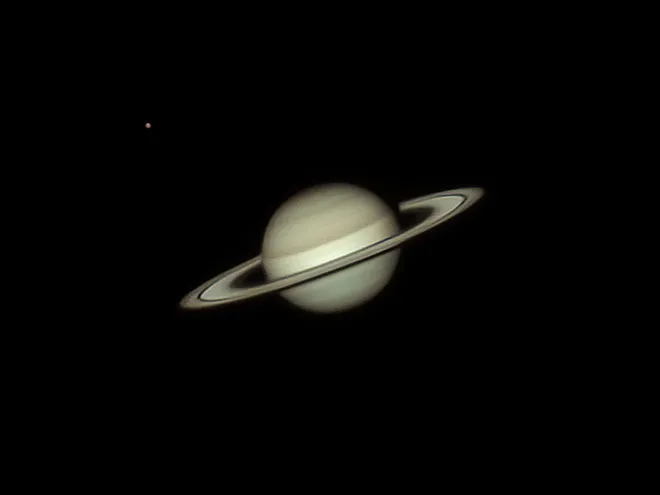Saturn's rings will disappear from view briefly in 2025. Here's why.

Catching an unobstructed view of Saturn’s rings from our planet will become nearly impossible in the next couple of years.
The iconic rings are set to disappear from view briefly in 2025 due to the tilt of the planet as it makes its way around the sun once more, according to reporting by IFLScience.
It takes Saturn about 30 Earth years to make one full rotation around the sun. About halfway through its journey, an equinox occurs.
Though Saturn’s rings may give the illusion that they have disappeared, the planet is just tilted in accordance with its orbital plane. The gas giant’s rings are more or less visible depending on the angle or its point in orbit, according to NASA.
"For nearly half of Saturn's orbit, the sun shines on the south side of the rings. For the other half, it shines on the north side," a NASA transcript recorded.
Here’s what we know about the disappearing rings.
Do Saturn’s rings disappear often?
Saturn’s rings have never completely disappeared (though they might in the next few hundred million years). The planet’s ring system extends up to 175,000 miles from Saturn’s surface, making them slightly more visible on Earth.
The planet’s equinox occurs every time the rings cross Saturn’s orbital place, which occurs every 15 years, according to NASA. The next equinox will occur May 6, 2025.
The rings are seen “edge-on and appear as a thin line” giving the illusion that they have completely vanished when Saturn’s official change in seasons is observed from Earth, the European Space Agency has reported.
Earth crosses the plane of the rings every 13.7 to 15.7 years, according to reporting by IFLScience.
Because Saturn’s rings are illuminated by the sun straight on when an equinox occurs, the cast by the rings onto the planet are compressed into a single narrow band on the planet. The rings can also appear darker or bright than normal due to the relative position of the sun.
“The underside of the rings, which we have not seen for many years will come into view, as well as the planet’s Southern Pole. The maximum inclination it will reach will be in 2032, when the planet will be at 27 degrees with respect to us, truly showing off the rings,” IFLScience reported.
More:NASA releases images of the 'bones' of a dead star, 16,000 light-years away
What are Saturn’s rings made of?
A lot of space junk.
NASA scientists have predicted that the stuff Saturn’s rings are made of are none other than pieces of comets, asteroids, or shattered moons that were crushed to bits by the gas giant’s powerful gravity.
Those millions of small chunks are thought to be made of ice and rock. The size of the ring particles range drastically, as small as a grain of sand to as large as a mountain, according to NASA.
Each of Saturn’s seven rings are relatively close to one another, but all orbit at different speeds around the planet. If you were observing the rings from the tops of Saturn’s clouds, they would look mostly white.
Scientists have recently discovered that the planet’s most distinct feature might be in danger of disappearing completely in the next 300 million years, or even sooner than that, NASA observed in 2018.
Saturn’s rings are being pulled into the planet by its gravity as a dusty rain of ice particles under the influence of Saturn’s magnetic field, confirming the findings made by Voyager 1 & 2 space probs decades ago.
“We estimate that this ‘ring rain’ drains an amount of water products that could fill an Olympic-sized swimming pool from Saturn’s rings in half an hour,” according to James O’Donoghue of NASA’s Goddard Space Flight Center in Greenbelt, Maryland.
Research findings have suggested that Saturn got the rings later in its life since its unlikely that the rings are older than 100 million years old.
“We are lucky to be around to see Saturn’s ring system, which appears to be in the middle of its lifetime. However, if rings are temporary, perhaps we just missed out on seeing giant ring systems of Jupiter, Uranus and Neptune, which have only thin ringlets today!” O’Donoghue said at the time.
Scientists are still researching how fast the rings are eroding, according to an April 2023 update by the University of Reading, a public research university in the U.K.
Disclaimer: The copyright of this article belongs to the original author. Reposting this article is solely for the purpose of information dissemination and does not constitute any investment advice. If there is any infringement, please contact us immediately. We will make corrections or deletions as necessary. Thank you.


